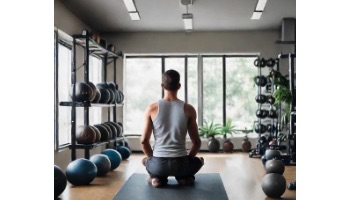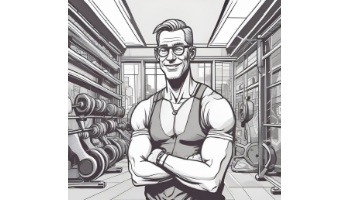 When exercising, it can be hard to monitor your own form. There is a trick though that can help you with this problem: pay attention to your feet.
When exercising, it can be hard to monitor your own form. There is a trick though that can help you with this problem: pay attention to your feet.
It’s About Center Of Gravity
In order to perform full body movements like squats, lunges, and deadlifts with good form your body must be able to move while maintaining balance. When you are moving well and keeping your center, the pressure on your feet should be evenly distributed over the whole foot, with your center of gravity right over the mid-foot, just in front of the ankle. If you are not able to get proper motion from your joints, however, your body will be forced to compensate, often by shifting your center of gravity to a new location. Sometimes, this shift is large enough to cause you to lose your balance. If you find yourself falling backward on a squat for example, this is usually what has happened. In deadlifts, you might end up too far on your toes and may even have to take a step forward to catch yourself. Those are obviously undesirable outcomes, and they indicate that there is something wrong with your form.
It’s All In The Feet
Even if it is not that extreme, slight shifts will still show up in your feet. If your squat mobility is a little limited you may notice your weight shifting onto your heels, even if it is not enough to make you fall backward. With deadlifts, there might not be a forward step, but you’ll still feel it if you have too much weight on your toes. During lunges, you may find that you are continually rolling onto the inside or outside of the foot. These shifts at your feet are indicators for you. They tell you when something is off with your form and you should listen to that feedback.
Try it the next time you exercise. Ask yourself, where is your center of gravity when you are doing movements? Is it firmly under the mid-foot or is it on your toes or on your heels? What about the inside and outside of your foot? Do you feel like your arches are collapsing or that your ankle is rolling? If you find a problem, see if you can get things back where they should be—simple awareness could be enough. If you struggle to fix the problem, perhaps a little professional help is in order. Either way, solving the problem could help prevent an injury, or simply make you better and stronger. Either outcome would be worth it.


